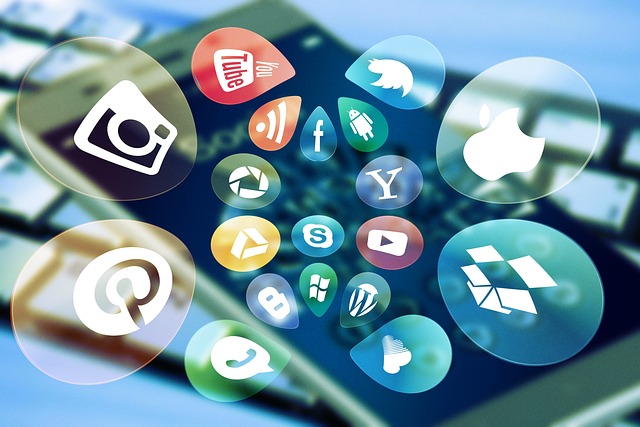The rise of mobile applications has transformed people’s relationships with one another and the environment around them. Even traveling from one area to another has been made easier thanks to mobile applications. It’s hardly surprising that more businesses than ever are considering building their app.
Mobile app development is unquestionably on the fast track. According to Market Research, the market is expected to grow at a CAGR of 14% and reach $100 billion by 2022. For this reason, it’s essential to keep abreast of the most cutting-edge mobile app development techniques.
If you want to keep your app as engaging and intuitive as possible, you’ll need to watch these new technologies. Trying to do so is a difficult task. The process is made easier by mobile app development tools.
Let’s look at some of the most popular mobile app development languages and frameworks.
The 5 Most Popular Languages for Mobile App Development
1) Swift
Apple created swift in 2014 as a new programming language. Since then, it has grown in popularity among developers working on iOS, macOS, tvOS, and watchOS applications.
Swift’s biggest selling point is that it uses a fraction of the code to accomplish the same outcomes. On the other hand, Swift leverages current technologies like generics and closures to make coding easier and more efficient. According to a Stack Overflow study in 2020, Swift is the 14th most popular programming language, with 65.1 percent of developers saying they prefer it.
If you want to utilize third-party libraries from Objective-C in Swift, you’ll need to use the Objective-C version of Swift.
Swift’s Advantages:
- With Swift, you’ll discover that many of your day-to-day programming activities may be accomplished with fewer lines of code than with Objective-C.
- It not only simplifies code but also improves the performance of your software.
- There are several built-in features in Swift.
- Airbnb, IBM, Uber, and Lyft are just a few big names now embracing Swift.
- If you’ve never written a line of code before, Swift is a much better option than Objective-C because of its easy syntax.
Swift’s disadvantages:
- Memory management is a problem when compared to C++.
- Apple may choose to apply optimizations in LLVM (Low-Level Virtual Machine) that target Objective-C, affecting its performance.
2) Java
If you’re looking for a development platform with few implementation requirements and the ability to run concurrently, Java is the best option for you.
It eliminates the requirement for recompilation by allowing app developers to write once and execute everywhere. If you want to execute a Java program on any computer, you’ll need to compile it into bytecode (a class file).
There are already more than 9 million Java developers worldwide as of 2020. In addition, Statista places Java 5th in terms of popularity, with 35.35 percent of the total.
Benefits of Java
- One of Java’s best features is its virtual machine, which turns your app’s code into machine-readable instructions for mobile devices. Even if thousands of users are added, Java programs may maintain their outstanding speed.
- Windows, Linux, and Mac OS are all supported platforms for this software.
- Programmers can design a single code base that can be used on several operating systems.
- There is no need to learn another programming language to build Android applications since everything can be done inside the Java programming language.
- It’s a free and open-source language that cuts down on project development costs.
Drawbacks of Java Use
- It has a much more complex syntax.
- When compared to other programming languages like Swift, Java just isn’t as fast or intuitive.
3) Python
Python is one of the most widely used programming languages globally, and it’s easy to understand why. Python is a dynamic, readily readable language that provides many more verbose language features without compromising readability or development speed.
As a result, it is one of the greatest options for designing a mobile application. Python has been used to construct applications for Android, iOS, Windows Phone, and other platforms. – Python may be used to design mobile applications, despite its reputation as a back-end or web-based programming language.
Python’s Advantages
- Once you’ve mastered programming fundamentals, Python is a breeze to master. Python’s grammar may be learned by novice programmers even if they have no prior knowledge of programming or coding languages knowledge.
- Python is a popular choice since it is a very inexpensive programming language. In other words, it’s free.
- It’s a useful tool for both front-end and back-end development.
- A programming language like Python may be customized to meet your requirements and then shared with others via open-source software. It’s simple to obtain help if you get stuck writing code.
The drawbacks of Python
- It’s not designed for mobile use.
- It consumes a lot of memory.
4) PHP
Web development is the primary use for PHP, a general-purpose programming language. It is now used for various functions, including system management, desktop programming, playing video games, and more. The original meaning of the abbreviation PHP was Personal Home Page, but today it stands for PHP: Hypertext Preprocessor.
PHP was first created in 1995, but it has undergone continuous improvement since then, adding new capabilities and enhancing overall efficiency. More than 9 million domains are now running PHP, making it clear that PHP is a popular programming language for creating websites and apps.
PHP has several advantages over other programming languages.
- As a result, you have more say in how your application operates.
- With a little tweaking, you can tailor your application to your specific requirements.
- It’s free (sort of). It’s great to get something for nothing!
- It may be integrated into HTML or operated using CGI on any operating system.
- MySQL, PostgreSQL, Oracle, and Microsoft SQL Server are supported, as well as other databases.
The drawbacks of PHP
- Compilation languages like C++ and Java may be much faster than PHP.
- Development tools, like debuggers, are not as comprehensive as those found in other environments.
5) C++
C++ is a general-purpose programming language that may be used to write applications for Windows, iOS, Android, and Linux. It was introduced in 1983. The latest version of C has enhancements to allow object-oriented programming and parallel processing. There is 1.7 percent of all websites employ C++, according to W3Techs data.
Advantages of C++
Mobile app developers may use it for various tasks, including healthcare, e-business, property, and gaming.
There are many ways to convey a lot with very few lines of code.
C++ is the best option if you’re looking for speed. This is because it generates machine code upon compilation.
Anyone who has worked with a Microsoft technology such as Visual Basic will find it simple to pick up the basics of C#.
You may use a plethora of tools to create your application.
Disadvantages of C++
One of two approaches is used for memory management: trash collection or reference counting. Using these features adds overhead that might slow down your application.
In certain cases, writing code in C++ might take longer than in an interpreted language like JavaScript or Python.
Highest-Rated Frameworks for Developing Mobile Applications
1) Flutter
Flutter could be of interest if you’re a lover of React Native. Flutter is Google’s mobile user interface framework. In theory, a single codebase could be used for both iOS and Android app development.
To put it another way, instead of writing once and testing all over, you can write once and deploy to both platforms with ease. It’s built on top of Dart, which you may recognize from Google’s attempt to replace JavaScript. However, other firms have yet to adopt it.
Flutter is a hot new challenger with outstanding features in the cross-platform mobile development space. Using Google’s Dart language, Flutter is both simple to learn and incredibly efficient. According to Google, Flutter is used by more than 5,000 developers per month.
During Google I/O 2018, Flutter will be getting two new experimental features: Stateful Hot Reload and Permissions. And Flutter is built on top of Skia, an established rendering engine that powers several Adobe software products.
Flutter app development firm should be on your radar if you want your mobile app to look great, function well, and operate fluidly across numerous platforms.
The Benefits of Using Flutter
A major advantage of using Flutter is sharing code across Android and iOS applications. It’s a great way for programmers to take on extra work and yet stay on top of their deadlines.
For Flutter development, mastering Dart is required.
It saves time and money if you already use some of the tools in your workflow.
Flutter provides a great set of tools that make it easy for developers to start. Flutter’s quick app rebuilds on Android and iOS allow for a faster development cycle for developers.
There is no need to utilize a web view to build attractive apps using Flutter’s API since it lets developers use native UI components.
Drawbacks of Using Flutter
Due to Flutter’s reliance on an existing language, you’ll need to know at least one other programming language to create a fully functional app with it.
The code is not always the most efficient. It implies that it might be slower or use more memory than a hand-written counterpart of a language’s interpreter.
2) React Native
In order to create native mobile apps for Android and iOS, developers may use Facebook’s open-source React Native framework, which enables them to reuse their existing codebase.
React Native is a great choice for developers who want to create native mobile applications rapidly without losing their JavaScript expertise. Such technologies have a flatter learning curve than many other development tools, which may help you get your product out to users.
If you want to design iOS or Android applications, you’ll need to learn Swift or Objective-C, while Java or Kotlin is required for Android. Because web developers are already acquainted with JavaScript, the usage of the language helps to remove these hurdles.
It implies that when you start working on a new project using React Native, you can typically get up and running quicker than creating an app from scratch or using another framework.
With React Native, there are several advantages.
Learning React Native won’t be too difficult if you already know how to write in HTML5 or CSS3.
An open-source framework that may run on any platform.
As a consequence of React Native’s ability to speed up the development of new apps, startups may save money on their initial development costs.
Data may be easily transferred between the front-end and back-end parts.
Using React Native has its drawbacks.
The compilation time of React Native applications is longer than that of Swift or Objective-C apps.
React Native does not completely support Android. Your app’s prospective consumer base will be limited if you rely only on this method at this time.
3) Cordova
It’s one of the oldest frameworks on the market, going back to 2010. While originally meant to construct hybrid mobile apps using HTML5/CSS/JavaScript, it has grown into a framework for creating applications that operate on many mobile platforms without requiring code rewrites on each (such as iOS and Android).
Statista says the most widely used cross-platform frameworks will have a Cordova market share of 16% in 2021. Cordova gives you access to native APIs while still letting you utilize JavaScript, CSS, and HTML.
Barcode scanning and user authentication are only two of the features that may be added via plugins. While competing frameworks provide greater functionality, Cordova remains an excellent choice.
Cordova has a lot of advantages:
It is an open-source framework that allows you to construct cross-platform applications by just utilizing one codebase.
JavaScript plugins and libraries are available, and you may even develop your own.
Cordova/PhoneGap is a wonderful choice for designing safe mobile applications since it guards against the most frequent security flaws in testing.
Cordova/PhoneGap makes it feasible to use native device capabilities like GPS and contacts without any extra code.
Cordova/PhoneGap also provides extensive instructions on creating mobile applications using their technology.
4) Ionic
Ionic uses HTML, CSS, and JavaScript, a mix that mobile app developers are already acquainted with. Developers may also use existing code for conventional websites and applications, which speeds up the development process. According to TechBeacon, it takes Ionic around 24 hours to build a working prototype that looks and functions like a native app.
Like many of the technologies on our list of the best mobile app development tools, Ionic is free and open source.
Advantages of Ionic
- Developing a native mobile app is quick, simple, and cost-effective with Ionic.
- This app can be built in less than a week utilizing easily accessible coding materials and tools.
- Ionic is an open-source library that may be used in various mobile development environments, not just one.
- In addition to iOS and Android, Ionic applications may also operate on Windows Phone and other platforms.
The drawbacks of Ionic
- The SDK (software development kit) for Ionic is not open source, though.
- Ionic’s biggest drawback is that it might be more time-consuming to master than a more conventional mobile framework.
5) Xamarin
A single codebase for iOS, Android, and Windows enables you to design apps with native performance easily. Code written in C# may be shared across several mobile platforms thanks to Xamarin.
Without a separate mobile development team for each operating system, you can rapidly create high-quality applications that run on a wide range of devices and operating systems. In addition, Microsoft is behind it.
Xamarin has been used to create more than 14,000 applications; each downloaded more than 2 billion times.
The Advantages of Xamarin
- It is possible to design an app once and run it on many platforms, such as Android, iOS, and Windows Phone. Xamarin is an excellent choice for this.
- This approach saves you both time and money instead of employing a distinct cross-platform development framework for each platform.
- Since C# is the language required to utilize Microsoft’s most recent.NET framework with Xamarin, those who already know it will benefit.
- If you want to add more functionality to your app, there are several free, open-source plugins you may use. They may not all be as polished or dependable, but they’re free is a bonus.
The disadvantages of Xamarin
- Xamarin is a relatively new language, which may not be as stable as other languages.
- Xamarin doesn’t have all the functionality you’d get with native development.
Final Thoughts
There you go: the best technologies for your project are out there. The kind of project and the intended audience have a significant role in determining which option is best.






